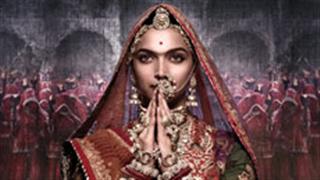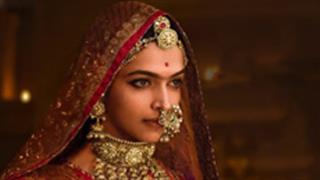`They first approached us to create one look for Ranveer Singh's earlier battles in the film and then, they also asked us to create the armour for Shahid Kapoor's final battle. After Mr. Bhansali saw these armours he loved them so much that he then asked us to create one for Khilji's final battle as well,` says Vipul. In fact, the armour for the final battle was revealed to them on Mr. Bhansali's birthday and going by his reaction, it was the ideal birthday surprise for him.
These armours are a result of back-breaking research not only in terms of their authenticity but also the functionality. The duo consulted an engineer to confirm the robotics incorporated in the armours. `Authenticity and mobility of the armours was our prime concern as it is imperative that the actor is able to perform stunts in them. Hence, we carried out thorough research on the armouries and weaponries of the era around which the film revolves. We employed actual historical techniques to create the armours such as cuirboilli technique, sculpting, chiselling, inlaying to name a few, while making sure they align with today's standards of comfort and weightlessness,` says Vipul.

Accompanying historical and functional research, the construction of the armours also comprises of Harsheen's expertise of psychological analysis of the characters being portrayed by Shahid Kapoor and Ranveer Singh as actors along with Mr. Bhansali's vision of his characters. Ratan Singh is an embodiment of love and patriotism while Allaudin Khilji embodies conquest and invasion. Interestingly, even though the same materials have been used in their armours, they have been treated differently to depict their opposing personalities. Both the characters are so strong and contrasting that the challenges while designing for both cannot be compared. The techniques used in armours for both of them vary drastically.
Harsheen says, `Once I was able to get into the psyche of Maharawal Ratan Singh it helped in bringing elements to his armour that represent nobility and honour. Even the colours used for Shahid's armour show just that. The blood red depicts honour, love, and eagerness to serve one's land and the deep gold stands for courage, generosity and passion.` Not only that, the design elements in Shahid Kapoor's armour are inspired by the sun rays and the chest-plate is coloured like the Rajputana soil at different times of the day.
On the other hand, Allaudin Khilji's armour represents the Sultan that he envisioned himself as. `The leather lions on his shoulders show his strong-headedness. The lions have been chiselled and hammered to bring into form - as part of the technique which is also symbolic to Khilji's conquest. Also, the darkness of the character has been enhanced by engraving reptile scales on the lion heads,` says Harsheen.
Even the storage of these costumes is one of a kind. When not in use, the armours rest on life-sized mannequins, which are then placed inside vintage closet trunks. These are no ordinary trunks since they are fitted with lights and wheels for easy transport when the armies are moving in caravans before settling at base camp. All this helps transport the actor psychologically into that time and era.
Padmavati is due to release on December 1 when you can catch the details of the armours in all their historical glory.
Movie's Synopsis: Rani Padmavati (aka Padmini) is said to be one of the most beautiful women to ever exist. This real life story is epitome of Love and sacrifice between Rajput Queen Padmavati and Rana Rawal Ratan Singh, the Rajput ruler of Mewar. Their perfect life took unfortunate turn when Allauddin Khilji's lustful eyes gazed upon Queen Padmavati. Alauddin Khilji is known as one of the most brutal rulers of the Khilji dynasty, who ascended the throne by killing his father-in-law, his brother-in-laws and their uncles. He was known for attacking states, only for their land and women. And, the motive behind the attack on Mewar was none other than royal Rani Padmavati. Chittorgarh fort, today, stands as an epitome of the true Rajputana spirit, loyalty, fidelity and bravery and a symbol of women power.

















